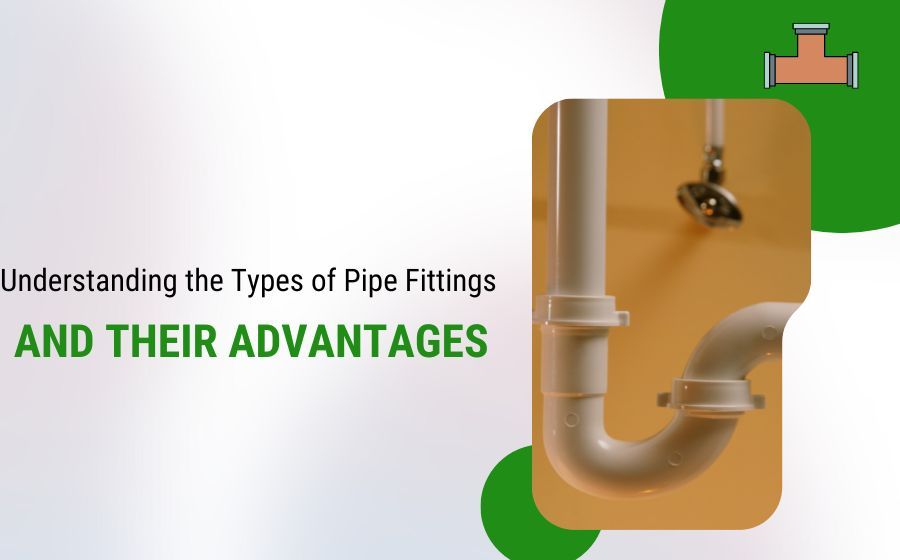
Do you have a plumbing problem? Are you in need of a new pipe or faucet? If so, you're not alone. Trouble finding the right pipe fittings can be frustrating, and can even lead to dangerous situations. To make things very easy for you, we've detailed the different types of pipe fittings, their benefits, and what type is optimal for each situation. From copper pipe fittings to teflon pipe fittings, we've got you covered. So don't wait any longer - read on to learn everything you need to know about finding and using the right pipe fittings for your home!
Pipe fittings are essential for installing and connecting pipes in the home. Quick connectors are the most popular type because they're easy to use and install. They come in three main types - reducers, elbow fittings, and quick connectors. Reducers allow you to adjust the size of a pipe by adding or subtracting connector rings from it. Elbow fittings are good for larger pipes and can be used in multiple configurations. Finally, quick connectors are the most popular type because they're easy to use and install.
Piping is an important part of any home, and it's crucial to choose the right fittings for the job. This can be a bit of a formidable task but with a little bit of knowledge and guidance, it's easier than you think. Here are four key tips on using the best pipe fittings for your home:
When it comes to plumbing and pipe fittings, it's important to know the different types of pipe fittings and their advantages. Each tool and fittings has its own unique set of features and benefits, so it's important to choose the right tool for your work. Some of the most popular fittings include male threads, female threads, NPT (National Pipe Thread Standard), and IPS (Intermediate Pressure Stainless). Copper pipe fittings are the most popular type because they're durable and last longer than other fittings. However, if you're searching for a temporary solution, galvanized pipe fittings may be a better option.
Pipe fittings are essential for any plumbing installation. They play an essential role in connecting all types of different pipes, and can be classified into three types - plastic, metal, and rubber. It's important to select the fitting that is best suited for your needs before installing it. By understanding the different types of fittings, you can make sure your plumbing installation goes smoothly! Additionally, each fitting has its own advantages and disadvantages for use in different applications. So, if you're not sure which fitting to choose, consult a professional!

Pipe fittings are essential for a variety of projects, from connecting two different pieces of piping to maintaining an airtight seal. When selecting a fitting, it's important to be aware of the different types and their respective advantages and disadvantages. Here are the four most common types of pipe fittings and what they are used for:
These fittings allow water to travel up the pipe more easily, which is beneficial in cases where water pressure is high or when water needs to be distributed evenly.
These fittings create an increased airtight seal, which is beneficial in cases where there is a need for a watertight seal and/or high water pressure.
A check valve is used to control the flow of water, and is typically found in residential plumbing.
A vent pipe is installed to allow air to escape from a pipe system, which is necessary in cases where there is a gas or oil leak.
Pipe fittings can be classified into three main categories: threaded pipe fittings, male/female pipe fittings, and couplings.
Pipe fittings can be used for a variety of purposes, but some precautions should be taken when using them. For example, fitting pipe into threaded fittings should be done with a wrench that has been appropriately sized for the thread size of the fitting. Fitting pipe into flared orifices should be done by hand.
If you are not confident in the compatibility of a coupling or fitting, you should contact an expert.
Pipefitting sizes must be accurate in order to ensure proper compatibility and a tight seal between the pipes. Incorrect pipefitting sizes can lead to leaks, which can cause serious safety hazards.

Langmuir pipe fittings are the most common type of pipe fitting. They are used when there is a need for high flow rates, or when a tight connection is needed.
By understanding the different kinds of pipe nipple fittings, you can choose the best fitting for your needs. Not only will this assit to improve the efficiency of your plumbing system, but it will also save you time and money in the long run. So, be sure to take the time to read through this blog and learn about the different types of pipe fittings available. You won't regret it!